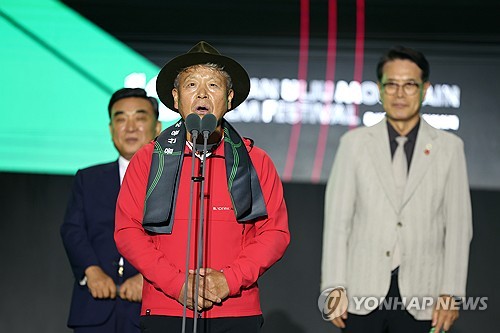The Ulsan Ulju Mountain Film Fest stitches together stories of mountains and people on screen.
Set against the clean forests and peaks of the Yeongnam Alps (a mountain range in southeastern South Korea), it began in 2016 as an international film festival.
Programs aim to boost local culture and spread awareness about nature and conservation.
Each year the festival evolves to emphasize both human challenge and coexistence with the natural world.
“Reading ourselves through the mountain” — onsite at the Ulsan Ulju Mountain Film Fest
Definition and overview.
Since the inaugural festival in 2016, organizers have screened films that celebrate the Yeongnam Alps’ clear air, steep ridgelines, and seasonal landscapes.
Moreover, the festival focuses on themes of mountains and nature, human endurance, and coexistence — showing everything from documentary shorts to narrative features.
In addition, it has become a deliberate cultural experiment: turning local geography and ecological assets into creative content for both residents and visitors.
Consequently, the event is designed to stimulate regional tourism and cultural industries.
Therefore, connecting local resources with festival programming is a central objective.
Meanwhile, international invitations bring the philosophies and life stories of climbers and outdoor artists from abroad to a Korean audience.
History.
It began as a Yeongnam Alps cultural-content project in 2010.
The idea grew from the Yeongnam Alps mountain-tourism master plan led by Ulju County and Ulsan city authorities.
After a pre-festival year in 2015, the festival officially launched in 2016 and started expanding from a local celebration into an international event.
At every step, residents, municipal officials, and cultural planners worked together to shape the program.
Over the years, the festival invited international films and guests.
For example, forums and workshops featuring well-known climbers helped define the festival’s identity.
However, the festival’s growth also exposed clear challenges, such as budgeting and broadening the audience base.
Why it matters.
It is a platform that artistically reinterprets the relationship between mountains and people.
Furthermore, this platform goes beyond screenings and becomes a site for education, hands-on experiences, and public conversation.
For instance, organizers run talk concerts based on climbers’ personal stories and field trips into the surrounding hills.
Therefore, the festival strengthens the local narrative rather than functioning as a mere tourism event.
On the other hand, it also creates space to publicize conservation and sustainability discussions.
In this respect, the festival designs both cultural value and a local brand at once.

The pro argument.
Supporters argue the festival makes a practical contribution to local culture and tourism revenue.
Indeed, such events temporarily boost hotel bookings, restaurants, and small business sales.
Therefore, the short-term spending can generate attention and investment for small local industries.
Moreover, the film fest can raise the area’s brand value.
An internationally recognized festival tends to attract outside visitors and can produce sustained publicity.
In particular, the Yeongnam Alps’ geographic character is a strong travel-content asset.
Educational value is also highlighted.
Films about mountains and nature act as tools to raise environmental awareness among young people and citizens (for example, school groups and community screenings).
Thus, conversations about local ecosystem protection can enter the public sphere.
Finally, international exchange matters.
Inviting foreign filmmakers and mountain athletes expands networks and encourages cultural interaction.
In turn, this positions the region within a global cultural ecosystem.
The counter argument.
Limited public resources could be crowded out by the festival.
Critics first point to fiscal strain and fairness in resource allocation.
If municipal budgets concentrate on the festival, other social services or cultural projects could be sidelined.
Consequently, budget priorities become a sensitive issue for residents who depend on public services.
Also, the mountain-film genre is relatively niche, which limits broad appeal.
Therefore, programming may attract only specific audiences, making it hard to secure a diversified, sustainable attendee base.
As a result, long-term operations could be unstable if audiences do not expand.
Environmental impacts and local friction are another concern.
Large events can harm fragile landscapes, increase traffic, and generate noise — all potential sources of conflict with residents.
Thus, festival operators must strengthen environmental management and participatory measures.
Finally, critics worry about transparency and institutional backing.
Without clear selection processes and accountable budget spending, public trust can erode.
Therefore, robust governance and long-term finance plans are frequently requested.
Analysis beyond the divide.
Proponents’ benefits and opponents’ concerns can coexist and be managed.
For example, public spending often stimulates local economies, yet it must be balanced against other priorities.
Therefore, the festival should adopt long-term budgeting and performance-based evaluation.
Audience growth is solvable through program diversification.
In addition to mountain documentaries, organizers can program family-friendly content, school curricula, and livestreamed events to widen reach.
Meanwhile, digital distribution can mitigate limits of physical attendance.
Environmental risk is manageable with prevention and community consultation.
Implementing on-the-ground operating manuals, green infrastructure, and local-benefit programs can reduce tensions.
Moreover, using clear metrics to measure economic spillover will strengthen the festival’s policy legitimacy.

Comparisons and examples.
Looking at similar mountain-film festivals at home and abroad, sustainability usually comes from a diversified finance model.
Specifically, a mix of sponsorship, ticket revenue, and public grants — combined with a long-term plan — is key.
Also, collaborative models with local communities help reduce disputes and optimize resource use.
For example, successful festivals developed co-branded products with local businesses to increase economic impact.
Another example is partnering with nearby universities to run educational programs that attract younger audiences.
These strategies could be adapted in Ulju and help shorten the learning curve.
However, simple replication is risky.
Each region must tailor strategy to its ecological conditions and infrastructure.
Unchecked expansion can trigger resident backlash and environmental harm.
Operational recommendations.
From an operations perspective, transparency in budgeting and measurable performance indicators are crucial.
Quantifying returns on public investment will justify fund allocations.
Also, a citizen-participation governance model should be established to reflect resident voices.
Program-wise, a hybrid online-offline strategy is advised.
Expanding festival content online can broaden audiences beyond those who can travel.
At the same time, partnerships with schools and local institutions can formalize youth programming.
To protect nature, introduce pre-event impact assessments and on-site manuals.
Plans for reducing carbon emissions, waste management, and dispersed transport will limit negative side effects.
Finally, include direct local benefits so residents see and feel concrete advantages.
Conclusion.
The Ulsan Ulju Mountain Film Fest is an important platform for strengthening local culture and raising awareness about nature.
However, its long-term viability depends on financial structure, community participation, and program variety.
Therefore, policymakers must ensure transparent spending and meaningful evaluation frameworks.
The festival’s potential lies in connecting local life to global conversations about mountains and environment.
At the same time, operating principles that prioritize residents and ecology must go hand in hand.
When stakeholders cooperate, the Ulju festival can become a durable cultural asset for both region and world.
We leave the reader with a question.
What role do you expect a local cultural festival to play in your community?
Your feedback can help shape the future of regional cultural planning.